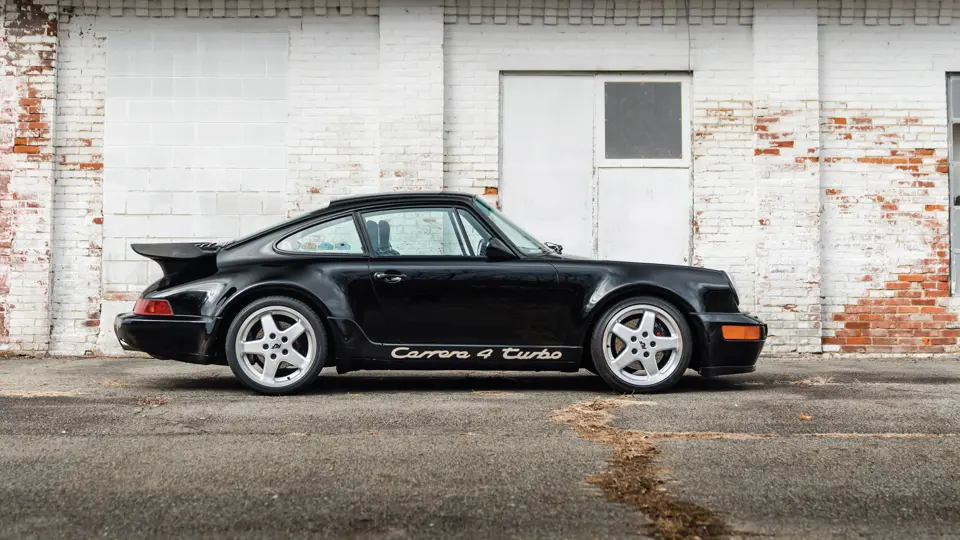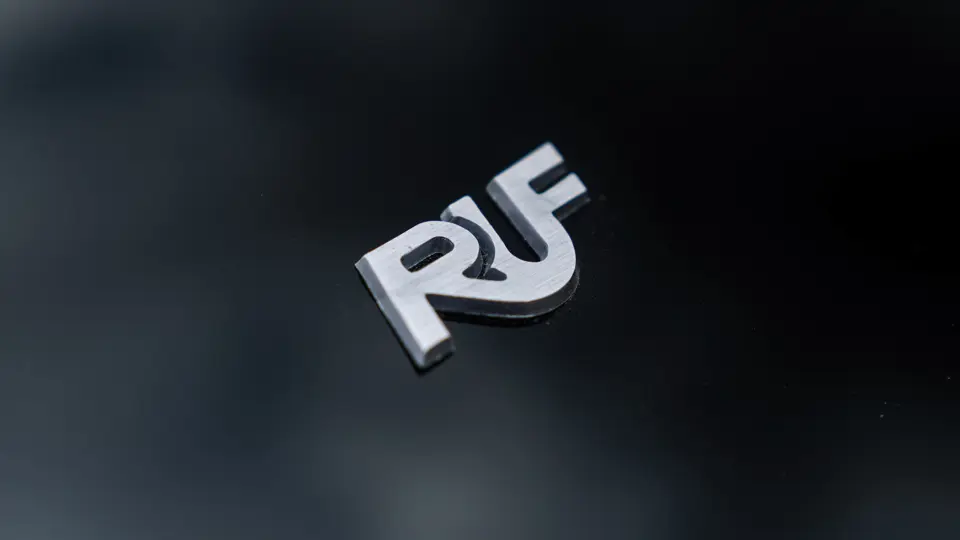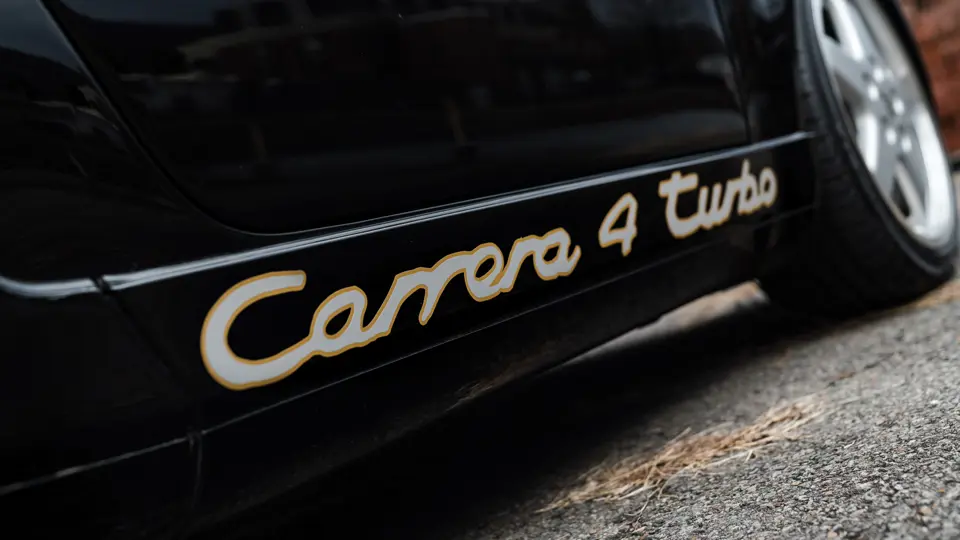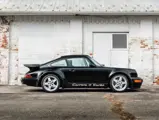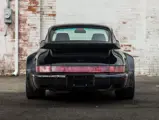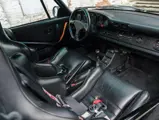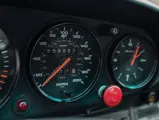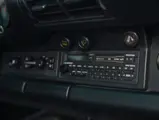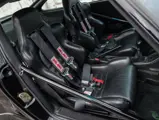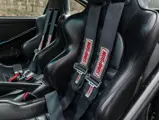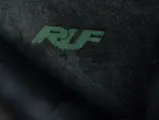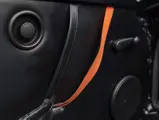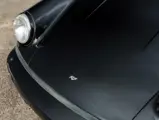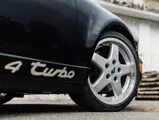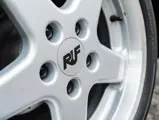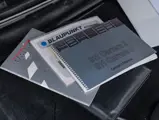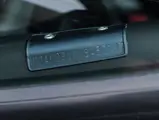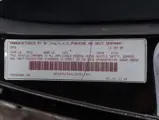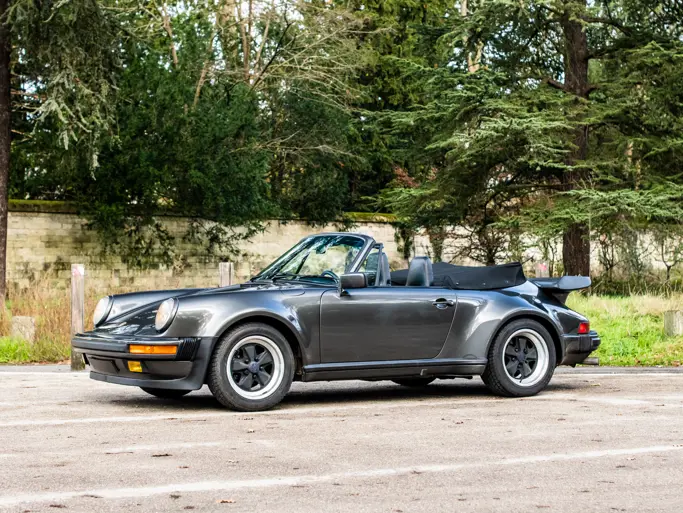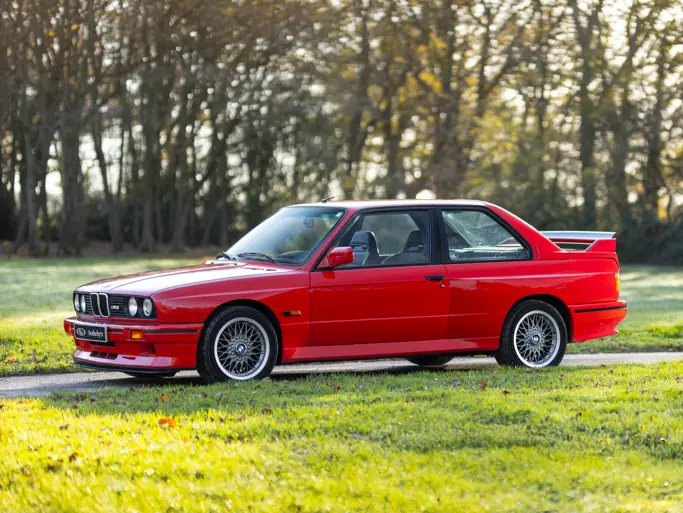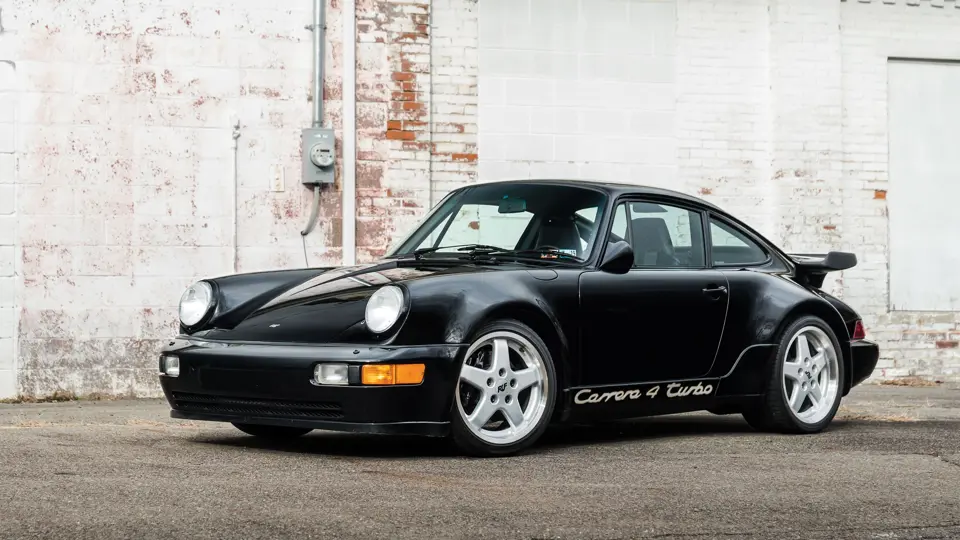
1990 Porsche RUF BTR Carrera 4 Turbo
{{lr.item.text}}
$240,800 USD | Sold
{{bidding.lot.reserveStatusFormatted}}
- Full RUF BTR conversion with 425 hp; dubbed the “Ultimate”
- Built at the request of Frank, Marylyn, and Steve Beddor
- Noted hill-climb and track competition history
- Features EKS RUF electronic clutch system
- Extensive recent servicing
By the late 1980s, Alois Ruf’s eponymous German firm was no longer a mere Porsche tuner. Granted full manufacturer status by the German government, the tides had turned for RUF in the wake of its ferocious Yellowbird CTR that amped the Porsche 911 3.2 into a 213-mph monster.
In 1988, about 150 km away from RUF’s operations, Porsche engineers in Stuttgart were ready to unleash the most sophisticated 911 ever, the 964. Its comparatively streamlined shape gave little hint as to the changes underneath. The 964 launched first in Carrera 4 guise, the nomenclature indicating that it was the world’s first four-wheel-drive 911. The 959-derived all-wheel-drive system was complex but proven, and it was tied to an advanced anti-lock brake system.
The black 1991 Porsche 911 offered here is no longer a mere Carrera 4, however. It was built up by RUF in Pfaffenhausen, Germany, in 1991 as a 385-hp RUF BTR, but even that hardly describes its current status. To the tune of about $225,000 between 1992 and 1993, RUF upgraded Frank Beddor’s engine to a next-generation turbocharged 3.8-liter flat-six rated a 425-hp tied to a Sachs-supplied RUF electronic clutch system and RUF Type R6450 gearbox. The unique gearbox does without a conventional clutch pedal, allowing for fast, low-stress shifting. Upgraded brakes and a stiffer suspension ensure that it can tackle corners at increased velocities.
Though not exactly subtle with its RUF-installed widebody kit, whale tail, and low-profile racing mirrors, the BTR does not scream for attention in the way the Yellowbird CTR did half a decade prior. The RUF-designed “concealed” roll cage is tucked behind the interior, visible only when the doors are opened, and wraps around a pair of RUF-specification racing seats. Additional weight-saving modifications performed by RUF at that time included removal of its heavy sunroof in favor of a solid roof panel, lightweight glass for all the windows, simpler door cards, and removal of rear wiper and all door electronics and insulation. Its interior features additional gauges in place of a passenger’s airbag and an airbag-less three-spoke RUF steering wheel so it can be safely driven on a track. RUF also added an AWD adjustable knob for the driver to change the four-wheel bias when in the rain or when racing. Furthermore, there is an ABS disconnect knob on the dash. The car retains its original Blaupunkt radio/cassette player with all new door speakers.
The RUF BTR weighs about 3,200 lbs. and retains air conditioning and heating for drivability in varying weather. Its 425-hp powertrain exits through an EPA-approved catalytic converter that allowed it to pass emissions in Pennsylvania last year, suitable in most states. Since the 425-hp BTR conversion was completed, it has been driven about 28,000 miles and is rated for over 202 mph in testing. A recent $9,600 service was performed that included adjusting its valve timing and refurbishing its RUF/KKK turbocharger with new seals.
This special RUF BTR was built up for American enthusiasts Frank, Marylyn, and Steve Beddor, who made good use of it at the Virginia City Hill Climb and the Silver State Classic in Nevada. The RUF BTR is pictured in a 1993 Autoweek magazine report on the Virginia City Hill Climb.
Both a significant piece of RUF’s history and a usable high-performance sports car, this BTR is ready to be enjoyed at great speed.

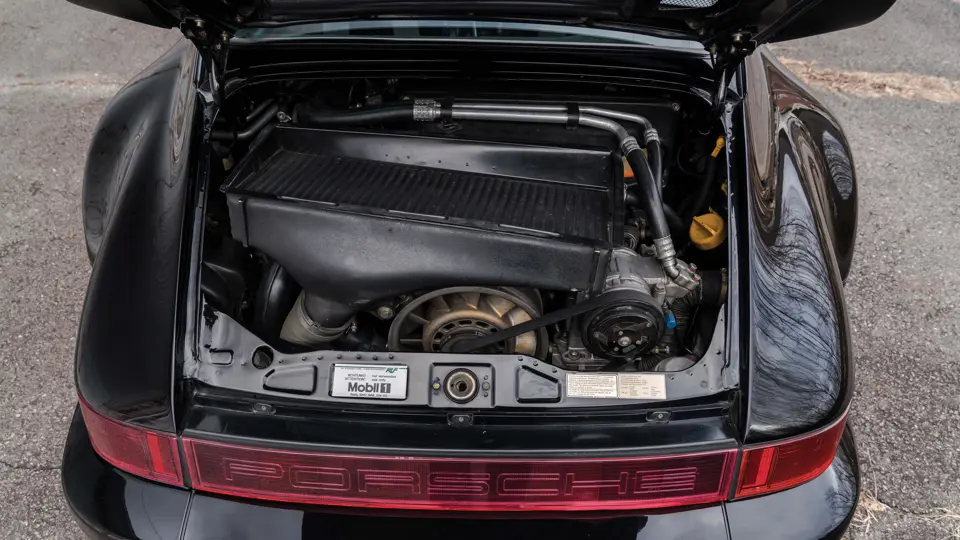



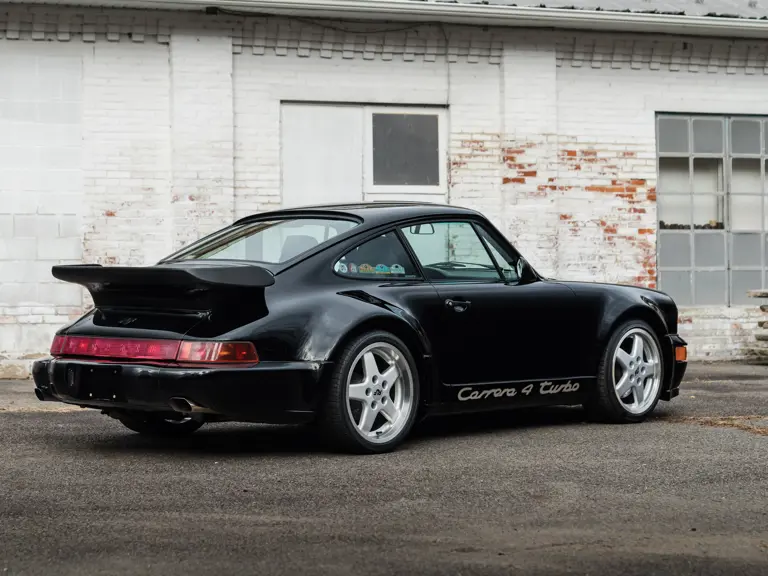

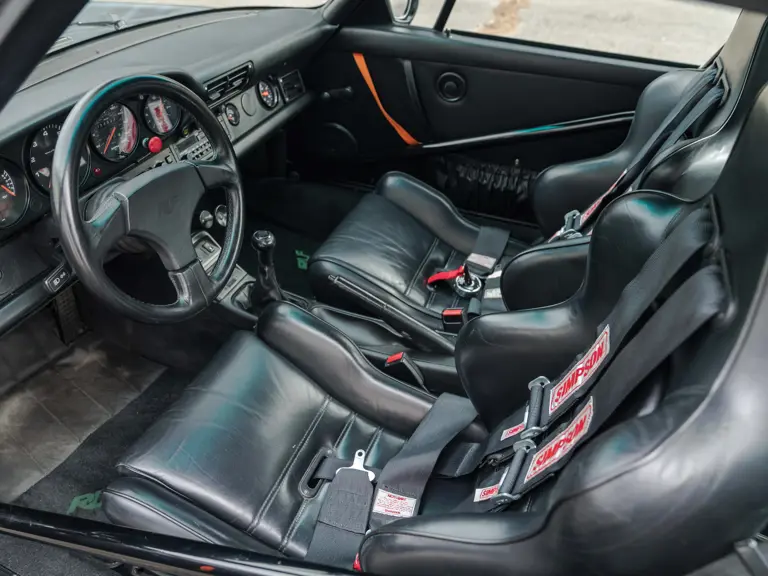
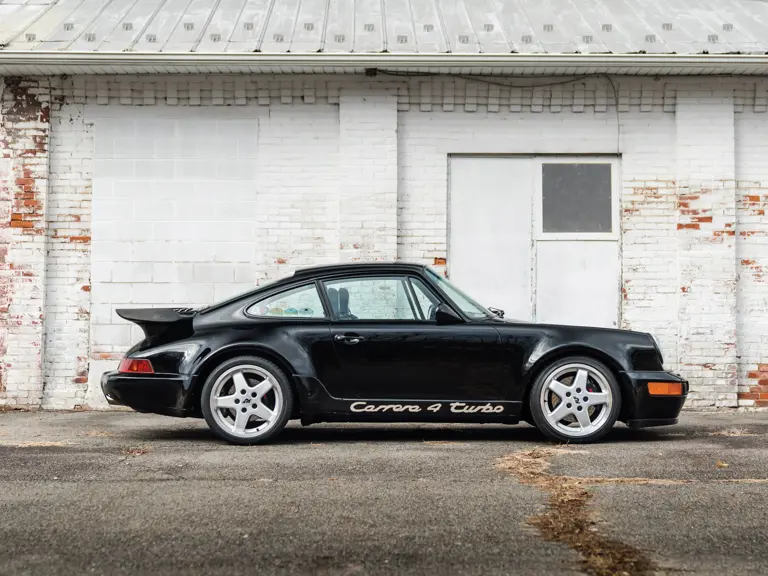

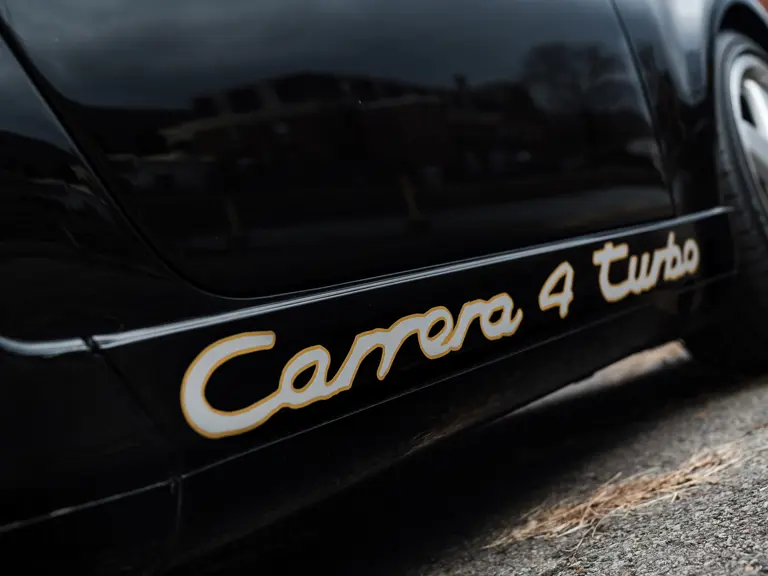



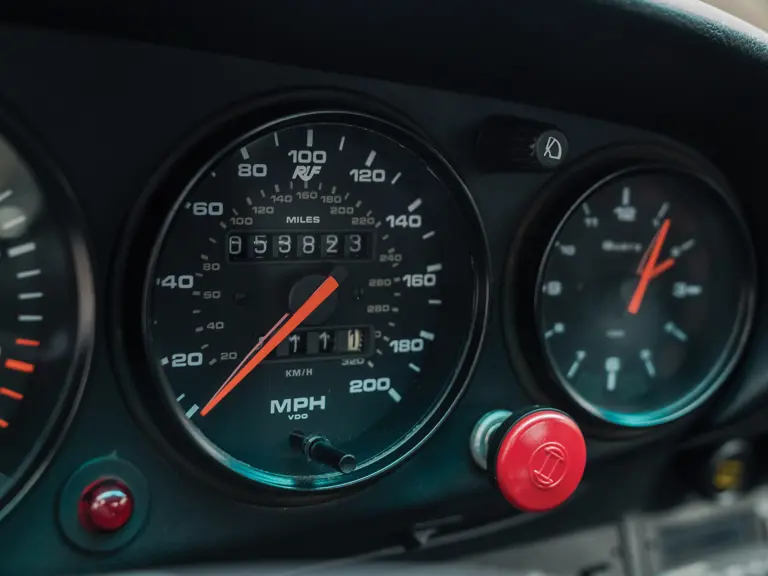

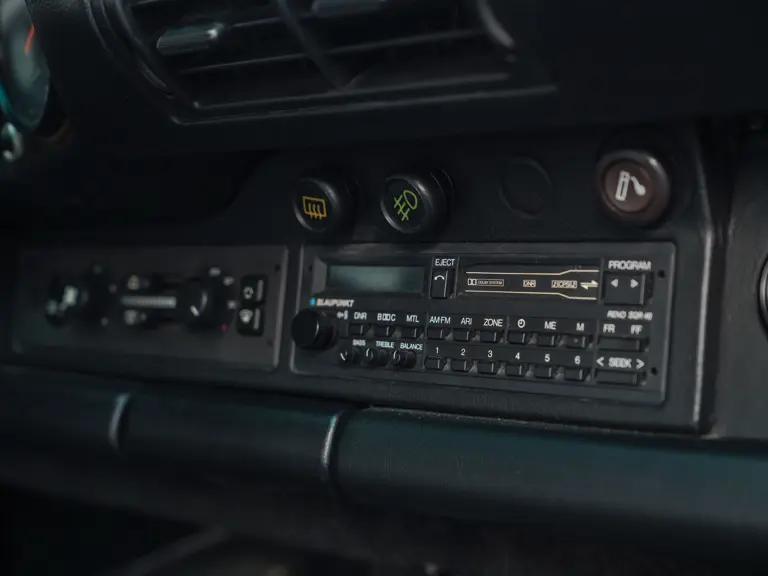
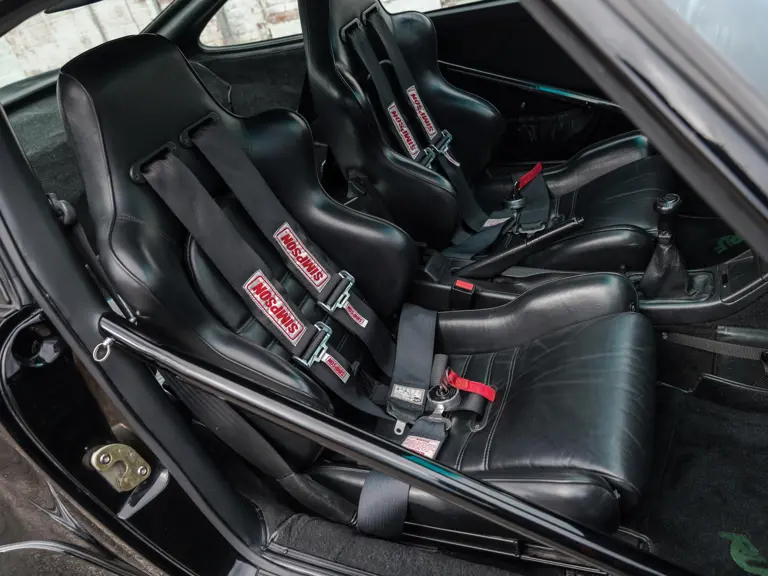

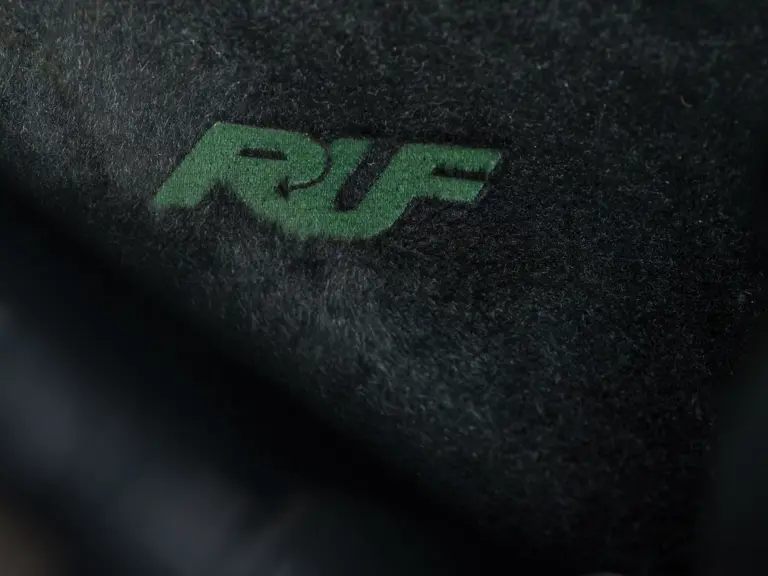

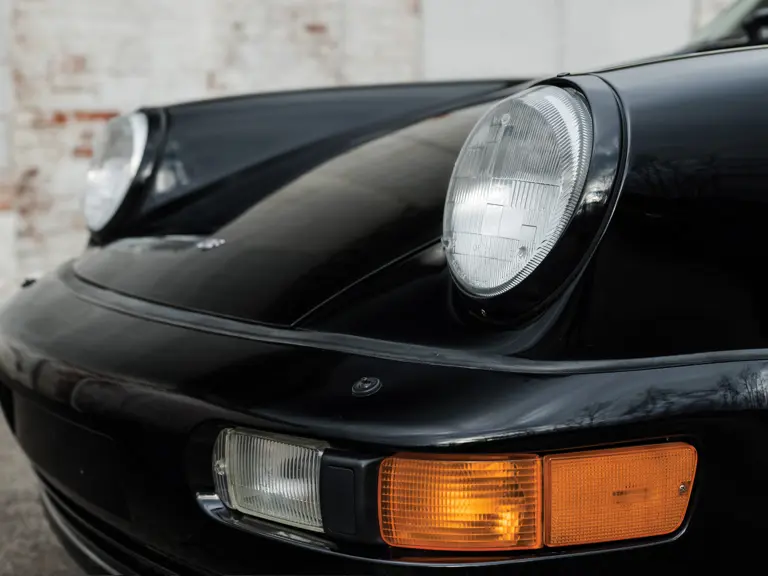
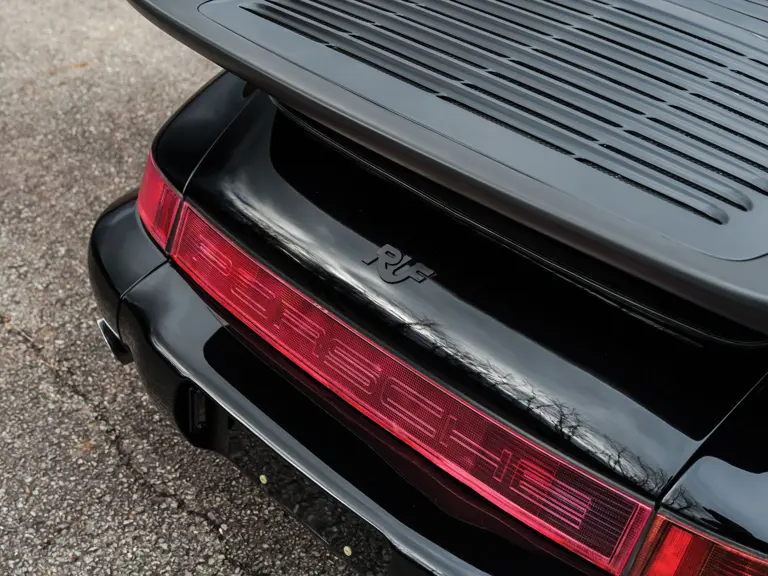
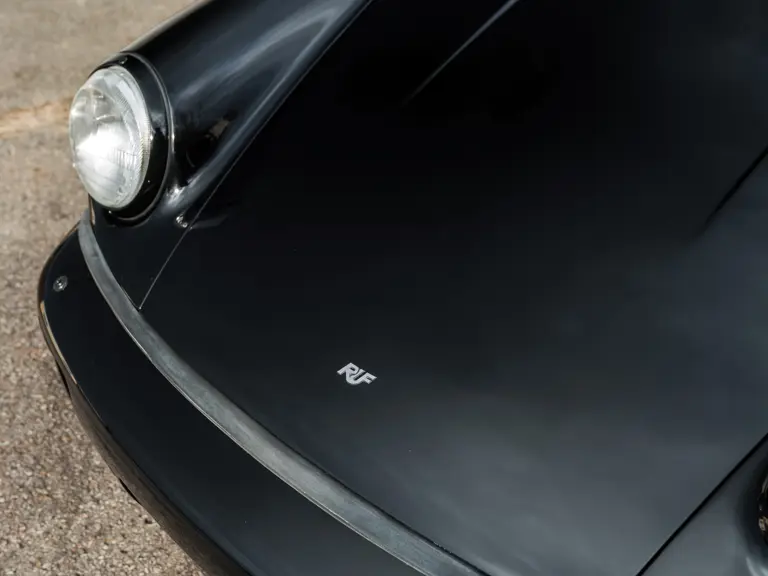

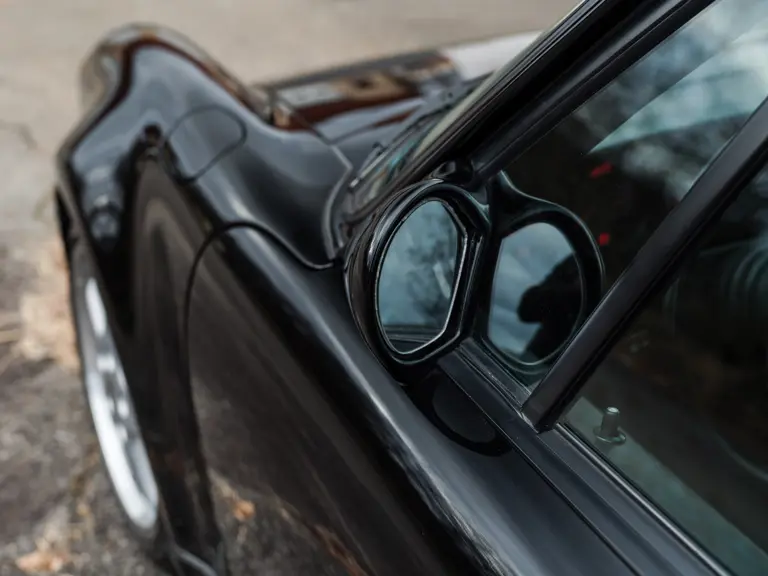
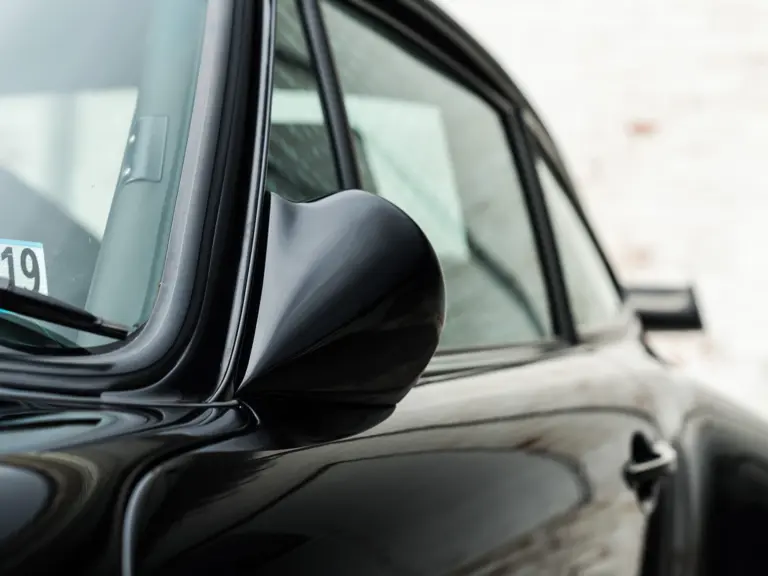
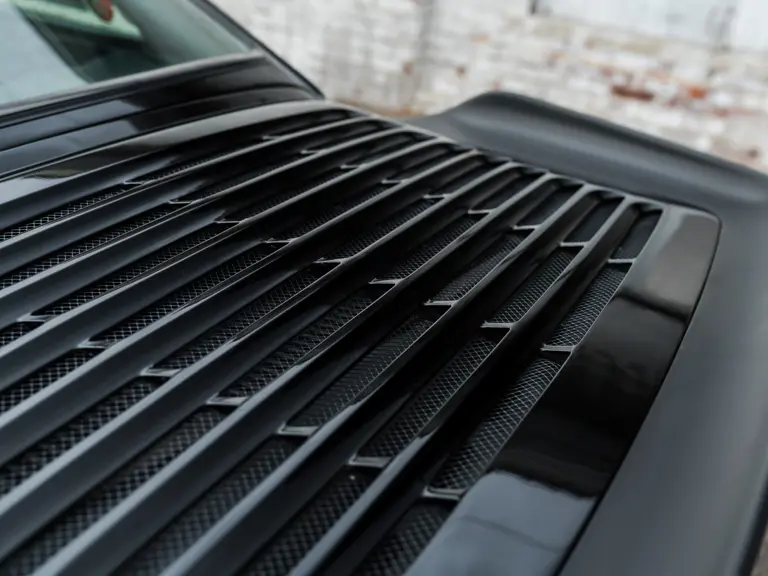

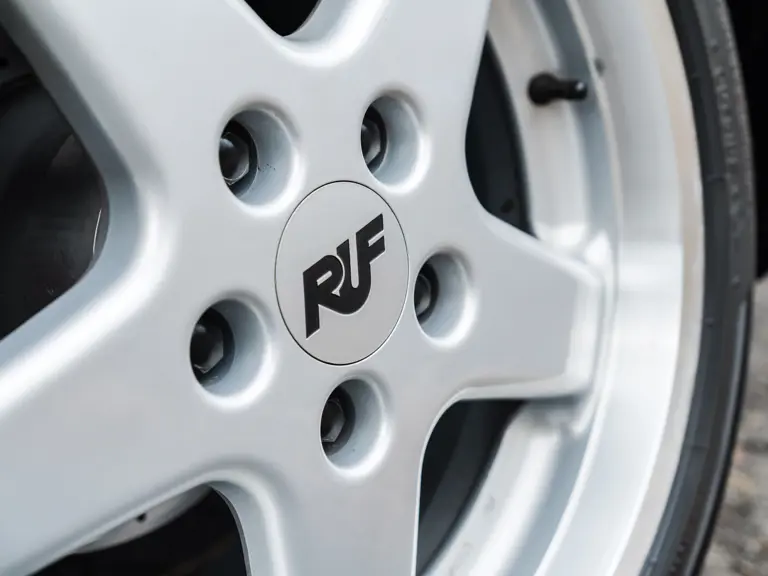
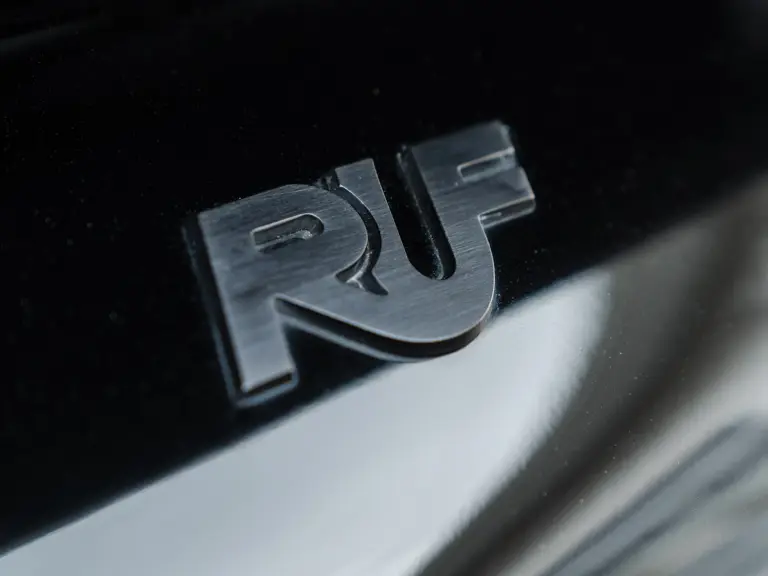
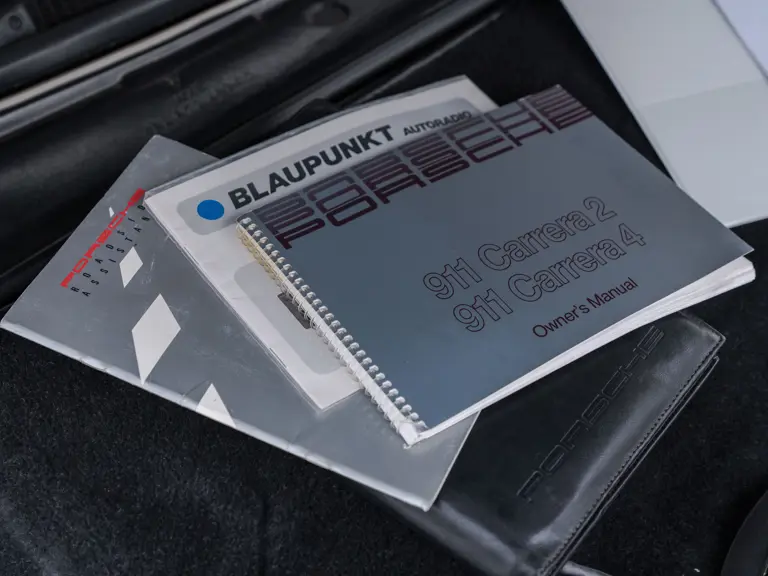
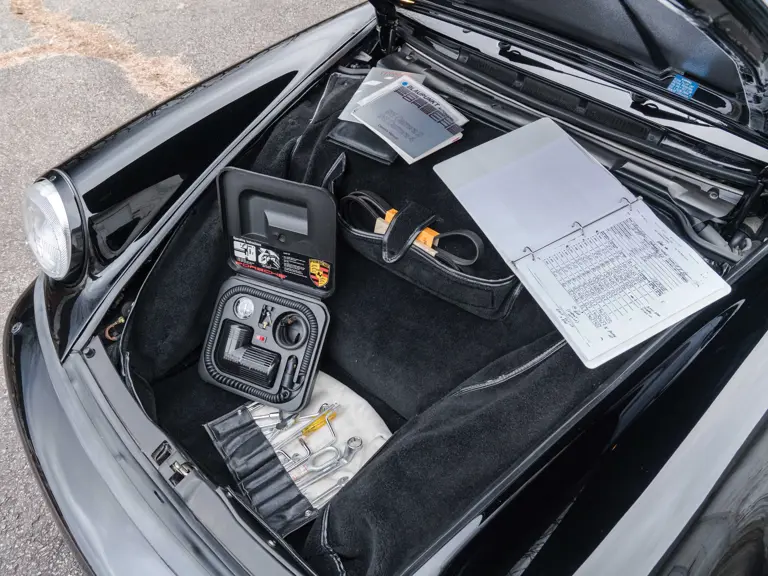
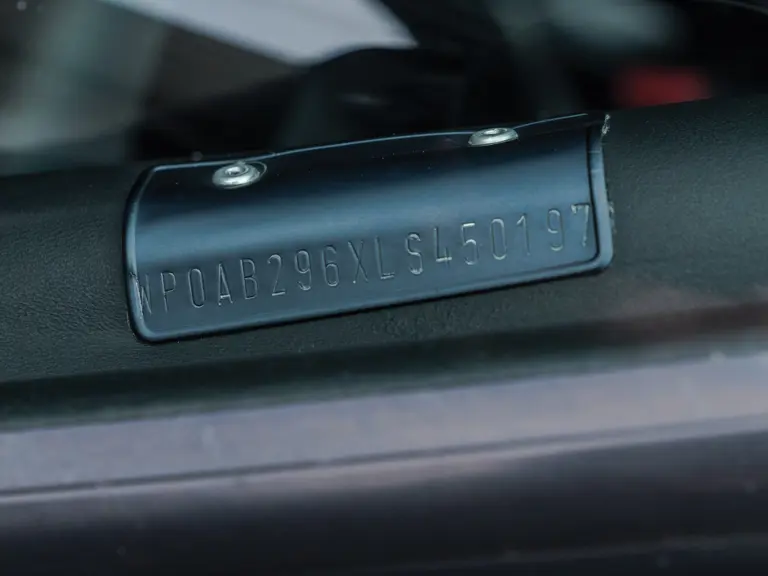
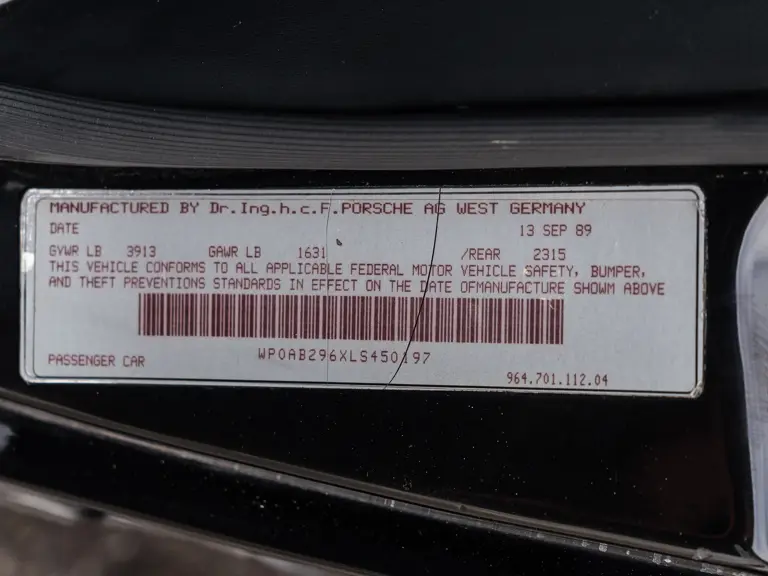
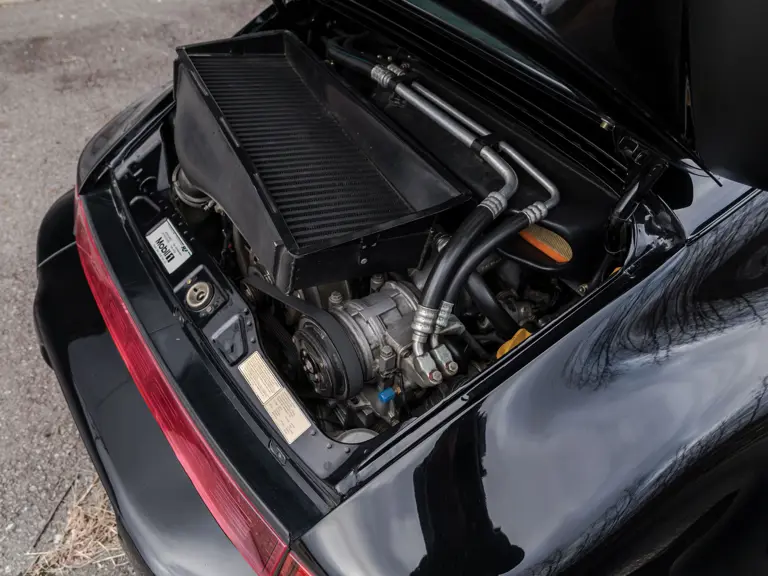

 | Amelia Island, Florida
| Amelia Island, Florida
